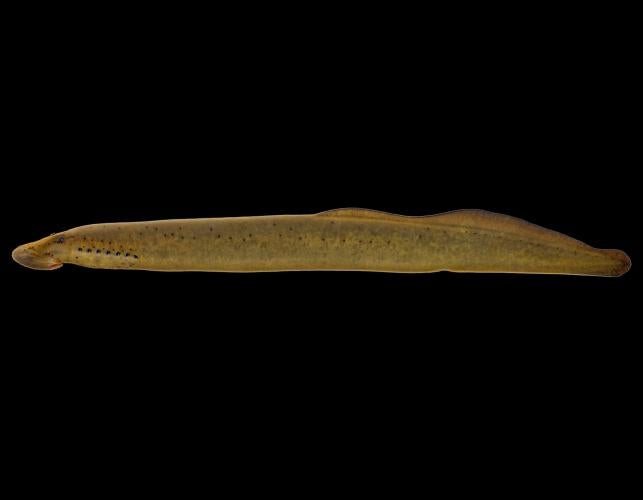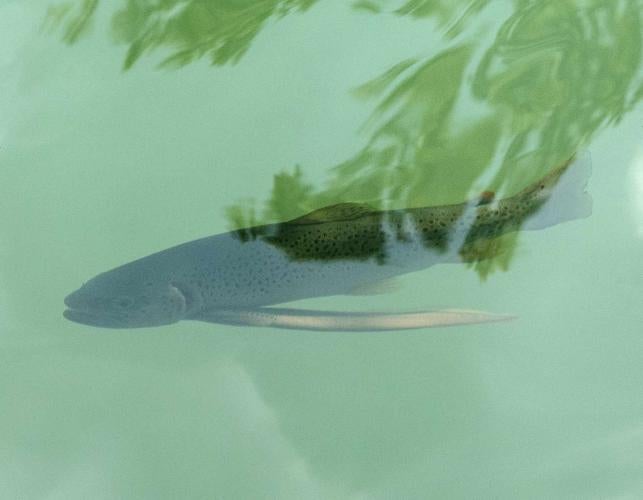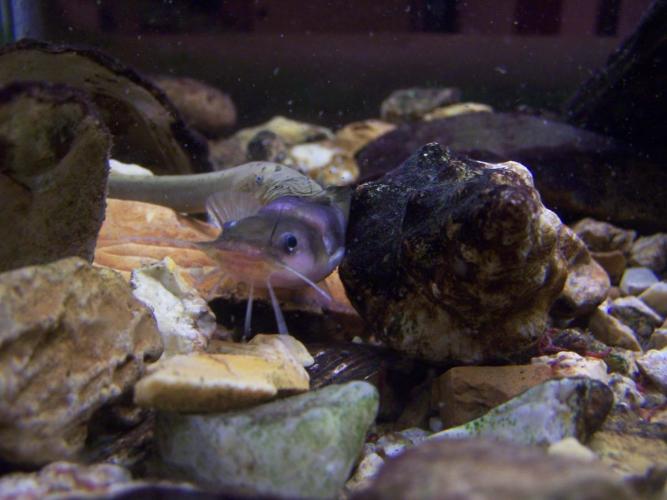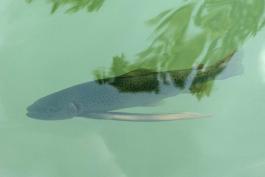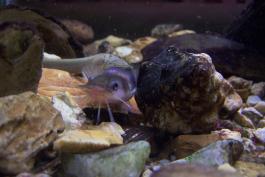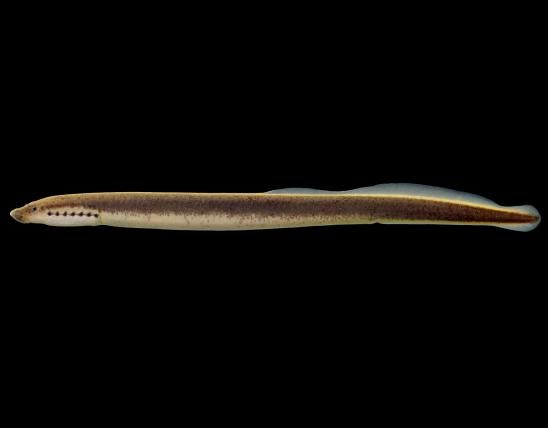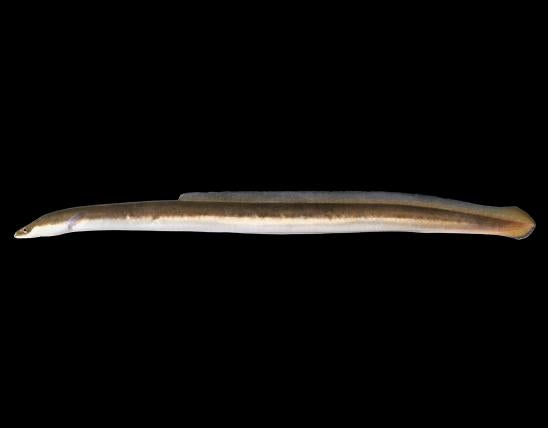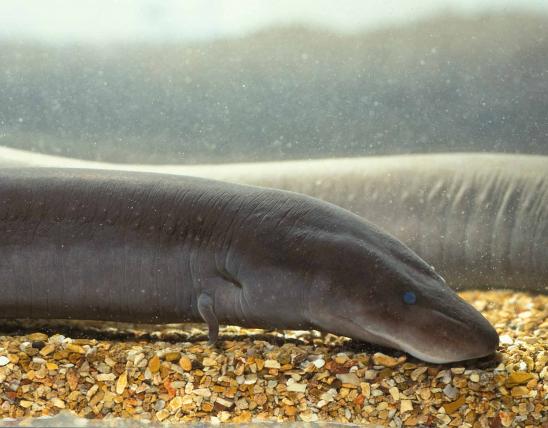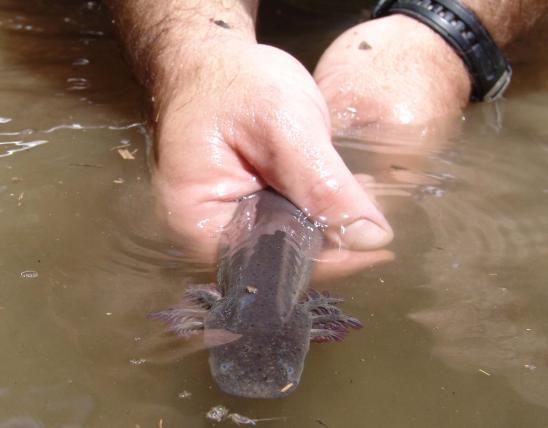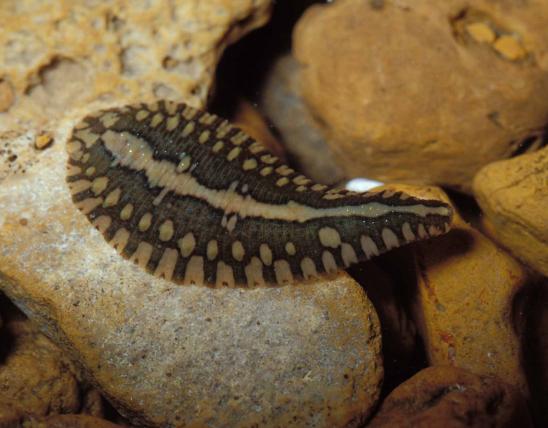
The chestnut lamprey is a chestnut-colored eel-like fish that has a cartilaginous, boneless skeleton, with no articulating jaw. Adults have a well-developed, rasplike oral disc, 7 porelike gill openings, no paired fins, and a single nostril. The ammocoetes (juvenile forms) are eyeless and have a horseshoe-shaped hood as a mouth.
Similar species: Missouri has six species of lampreys; of these, two are parasitic (the chestnut lamprey and silver lamprey) and the other four are nonparasitic (these are called brook lampreys; our four species are the southern brook lamprey, northern brook lamprey, least brook lamprey, and American brook lamprey).
- You can tell the chestnut lamprey from the silver lamprey by examining the innermost circle of teeth: the chestnut has at least some of them with 2 points, while the silver lamprey has all the innermost circle of teeth with only 1 point; also, the silver lamprey is known only from the Mississippi River, where it is much less common than the chestnut.
- Our four species of nonparasitic brook lampreys are never more than 8 inches long, they have narrow heads, and they have poorly developed disk teeth (the brook lampreys are bottom feeders and do not cling to fish).
Adult length: 10–12 inches; larvae can be 6 inches or more.

Large streams and small rivers of the Mississippi River system, including the lower Missouri River (below St. Joseph) and the larger streams and reservoirs of the Ozarks.
Habitat and Conservation
Large streams and small rivers of the Mississippi River system, and large reservoirs. Ammocoetes (their larvae) are found buried in stable, soft silt and muck of clear flowing streams. This species is the most abundant and widely distributed lamprey in Missouri. Any lamprey found attached to a fish anywhere except the Mississippi River will almost surely be this species.
Food
The larval ammocoetes filter tiny algae and protozoa from the soft sediments and water just above them. Adults attach to sides of a variety of fish including carp, catfishes, sturgeons, paddlefish, and sunfishes, where they consume the body fluids of host fish. Several days are required for the lamprey to complete its meal, after which it drops off. The host fish usually does not die as a direct result of the attack but may die of a secondary infection of the wound.
Status
There are nearly 40 species of lampreys alive on earth today. Some are parasitic and others not; some live in freshwater, some along coasts, and some in oceans. Lampreys are living remnants of a group of primitive, jawless vertebrates that lived over 350 million years ago. You could argue they are not even really fish: Among vertebrate animals, the jawless fishes (lampreys and hagfishes) are in a completely different superclass (major lineage) than all the other vertebrates, which all have jaws (including sharks, bony fishes, amphibians, reptiles, mammals, and birds). Taxonomists still debate the exact relationships, but it's safe to say that lampreys are no more related to sharks and bony fishes than amphibians, reptiles, birds, and mammals are.
Life Cycle
Thought to live for a period of 3 to 6 years in Missouri as ammocoetes (larvae). May live for another 2 years as a mature adult. Adults migrate upstream into small spawning streams. Spawning occurs in shallow pits, which the adults excavate by carrying stones away using their suction-disk mouths. Adults do not feed during or after spawning; once spawning activities are completed, the adults die.
Human Connections
Worldwide, people have used lampreys as food. From the middle ages through the 19th century, chefs in Gloucester, England, traditionally sent a lamprey pie to the reigning English monarch each Christmas, and they sent one to Queen Elizabeth II upon her Diamond Jubilee in 2012.
Globally, lampreys also figure into folklore and literature.
The sea lamprey, which does not occur in Missouri, is invasive in the Great Lakes and has caused serious declines in fish populations there. Human creation of channels linking various bodies of water hastened their spread.
The fairly simple brains, spines, and nerves of lampreys have made them popular among biomedical researchers; insights from their studies may ultimately lead to improved neurological medicine for humans.
Ecosystem Connections
Often when we think about "food webs," we picture only those species that completely devour one another. But there is something to be said for parasites, which harm but might not outright kill the organisms that give them sustenance: Their "prey" have a chance to survive after the attack.
Lampreys serve to control fish populations, and like other predators, ultimately strengthen the populations of the animals they eat by culling out the weakest individuals. Meanwhile, lamprey eggs and young lampreys commonly become food for other fish.
